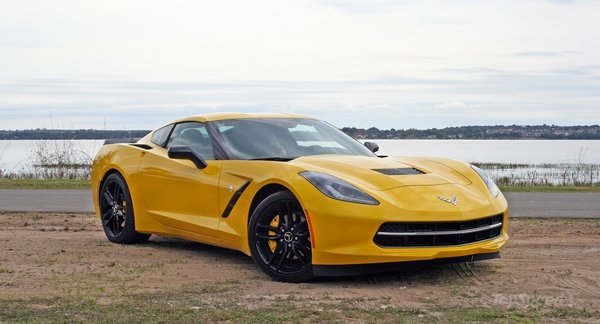This post could be considered an extension of The Gator Soup Proximity. The definition of a “muscle car” has changed over the decades. During the era when horsepower ran free and gasoline was 6 cents per gallon, muscle came to mean a V8 engine with dual quad carbs ala the Chrysler 300 of the 1960s. Nobody cared it got about 100 feet to the gallon when all 8 barrels of the carbs were wide open. It was a rush. The Corvette came to fame for many reasons, not the least of which was the fact certain versions came with a factory installed 160MPH speedometer.
Not long after this hey day came the OPEC oil embargo and America’s energy crisis. We suddenly found ourselves driving 4 cylinder vehicles because a relatively quick car which could get 20 MPG was the holy grail. Gas was now $1 or more per gallon and minimum wage was roughly $3.50/hr in most places.
 The Federal government imposed fleet mileage standards. This is why you saw the Chevy Chevette and Ford Pinto being priced so low and pushed on consumers with various incentives. In order to sell X 8MPG vehicles they had to sell Y 20MPG vehicles. Later when fleet standards were increased the automotive industry wailed that they couldn’t possibly build cars people wanted to purchase which got better than 20MPG. This, of course, was horse huckey. While that image is not my 2006 Toyota Avalon, it looks like mine. I can tell you the V6 engine gets 30MPG on the Interstate when I use cruise control and it has a factory installed 160MPH speedometer. It’s a great big smooth riding sedan which can compete with the “hay day” era Corvette, especially in a cross country race because the Corvette would constantly be stopping for gas.
The Federal government imposed fleet mileage standards. This is why you saw the Chevy Chevette and Ford Pinto being priced so low and pushed on consumers with various incentives. In order to sell X 8MPG vehicles they had to sell Y 20MPG vehicles. Later when fleet standards were increased the automotive industry wailed that they couldn’t possibly build cars people wanted to purchase which got better than 20MPG. This, of course, was horse huckey. While that image is not my 2006 Toyota Avalon, it looks like mine. I can tell you the V6 engine gets 30MPG on the Interstate when I use cruise control and it has a factory installed 160MPH speedometer. It’s a great big smooth riding sedan which can compete with the “hay day” era Corvette, especially in a cross country race because the Corvette would constantly be stopping for gas.
People who are fans of the “Fast & Furious” franchise movies will note that, while it nods to the Detroit iron of yesteryear, the definition of muscle has changed to be a 6 second car. Street racing has changed from drag strip quarter and half mile flat out runs to complicated (and dangerous) courses which require the drivers to return to the starting line.
One of the installments, I don’t remember which one, had a street race for pinks pitting newer rice rockets against two guys with classic muscle cars. If you paid attention to the pre-race engine reving intimidation Roman Pierce is reving his motor showing just how high it can go and the “Fonzy” character revs his Detroit monster. You see the car trying to roll over onto Roman’s ride because the engine has so much torque it’s twisting the frame.
Today I read an article on the 10 fastest electric cars. That would be where the corvette featured image is linked from. It’s electric and goes from 0-60MPH in 3 seconds. If you search for “6 second quarter mile” in your browser you will see all kinds of videos about 220MPH drag racing cars. I wonder just how long it will be until drag strips around the world have a class for electric cars? True, without the loud engines racing might not be as interesting for the fans, but, electric cars are already shooting for 400 MPH.
We are getting very close to the day when electric cars will become a viable option for most of us who have a place to put them inside where they could be plugged in. Once gasoline surges to $4/gallon or more again, we will see a massive increase in sales of both hybrid and electric cars. The hybrid is a stop-gap measure. Recharging an electric car takes far longer than topping off a tank. Once electric cars get a range beyond 400 miles though this will be less of an issue.
My Avalon has about a 20 gallon tank. If I’m on the Interstate using cruise control it can travel close to 600 miles before I have to stop for fuel. The reality is my bladder usually forces a stop earlier than that. Then I need to get another Diet Mt. Dew to start refilling my bladder. A bit of basic math yields the following:
600 / 70 = 8.571...
That will be the sweet spot. Electric cars which can go 600 miles on a single charge.While the current focus is all on battery capacity I haven’t seen too many auto manufacturers utilize the obvious cheat. Integrate solar panels into the hood and roof. No matter how little they add, it’s better than nothing.
Even Jeep has been working on an all electric Grand Cherokee. They’ve got a long way to go though. An 80 – 100 mile range isn’t good enough. While Tesla calls its Model X an SUV it doesn’t meet my definition. An SUV needs to be boxy for cargo. Given the 295 mile range and 2.9 second 0-60 time, it’s definitely not a lumbering hulk.
Using the classic 6 second quarter mile definition.
1320 feet in quarter mile / 6 seconds = 220 feet per second
That’s 150 MPH. If you could go from zero to 150 MPH instantaneously you could clock a 6 second quarter. Drag strip vehicles need to achieve speeds north of 200 MPH to make up for all of the seconds it took them to reach that 150 MPH. While it may sound strange, the bulk of your seconds are burned in the first half of the quarter trying to get above the break even speed.
A day to day commuter typically doesn’t care about such things. For you, muscle means being able to come off an on-ramp and get to speed fast enough to merge without getting maimed or killed. Even the Volvo driving soccer mom cares about this.
It’s really too bad Chrysler doesn’t partner with Tesla. An all electric Grand Cherokee which could go from 0-60 in 3 seconds with a 300 mile range would probably sell today. 300 miles at 70 MPH is just over 4 hours. If the recharge could be done from a standard wall outlet in under 45 minutes, people just might put up with it. The Grand Cherokee is a large enough vehicle to make integrated solar panels actually useful. They just need to be thin enough to not look ugly.
Now, a mini-van has even more roof space for solar panels and I don’t know of too many suburban moms who would mind a mini-van which could go from 0-60 in 3 seconds flat as they merge onto the freeway. That would be their definition of a “muscle car.”




